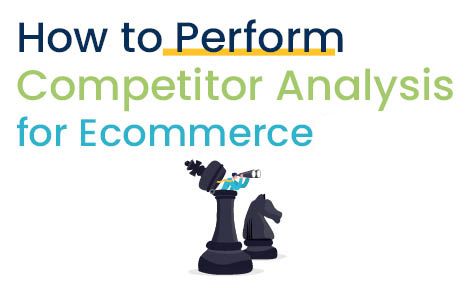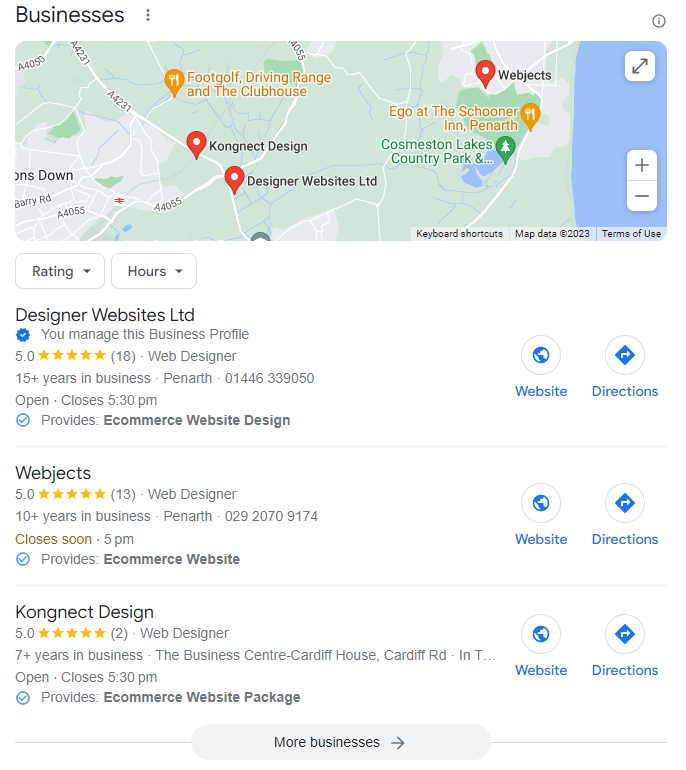
If you own or help run an ecommerce business, then you'll know that you're not the only one looking to make sales. Competitor analysis will allow you to evaluate your position within your chosen industry, which will help you discover your business's competitive advantage.
What is Competitor Analysis?
The short and simple definition of competitor analysis is that it is the process of identifying competitors, researching their strategies, and comparing their strengths and weaknesses against your own company.
Why Do Competitor Analysis?
You can conduct competitor analysis on many different levels - from an entire business overview, or you could delve into one specific aspect of a competitor's business. Many businesses conduct competitor analysis to re-assess their own goals and strategies and to ensure their business is still in line with the industry standard.
How to Do Competitor Analysis
STEP ONE | IDENTIFY YOUR COMPETITORS
The first thing to establish when conducting competitor analysis is finding out who they are! There are different types of competitors to consider when conducting competitor analysis, such as:
- Direct Competitors: businesses that offer similar products and services to similar customers in your geographic area.
- Indirect Competitors: businesses that offer similar products and services to a different clientele within your business category.
- Substitute Competitors: businesses that offer different products and services within your geographic area.
It can be quite a daunting task to find these competitors - but, you're in luck! There are many easy ways to find your competitors for competitor analysis.
Market Research - Research your market/industry to find companies that sell similar products or offer similar services to your own.
Customer Feedback - Implement a follow-up questionnaire or mailer as a customer contact point to ask customers why they decided on your product, and what other products they were considering before purchasing your own.
Social Media and Online Communities - Use what social media has to offer! Many people seek recommendations on social media and forums. Simply search 'Best [insert your product/service] Near [your location'] and see what the online world has to say.
Google Search - Many ecommerce businesses use Search Engine Optimisation (SEO) to gain website traffic and sales. If you want to find out who your SEO competitors are, think about the keywords that are essential to your business.
One of our target keywords would be ecommerce website design, for example. Search these keywords into Google and see which businesses come up on the first page. If you offer a service, you may also find valuable competitors in your local map pack which will allow you to see businesses similar to yours within your location. See an example of the local map pack below:

STEP TWO | GATHER INFORMATION
The next step is to evaluate your competitors. How do you evaluate business competitors? you may ask. Use the 8 P's of Marketing...
The 8 P's of Marketing can also be summarised as a holistic approach to competitor research. It is a framework that will help you enhance your business by assessing the strategies and processes of your competitors.
To get as much value as possible out of this step, create a spreadsheet including a list of your competitors, and the relevant information you gather for each of the 8 P's of Marketing.
- Product: What do they sell? What services do they provide?
- Price: How much do they charge for their products or services?
- Place: Where do they operate? Is their target market local or widespread?
- Promotion: How do they market themselves to engage with customers? Think about whether they use digital marketing, social media marketing, print advertising etc.
- People: How many people are in the organisation? What are the characteristics of the people they employ?
- Positioning: What groups do they market themselves to? What is their USP?
- Perception: How well are they perceived? What do people say about their services/products?
- Partnerships: Who are their suppliers? How long have they been working together?
STEP THREE | ANALYSE STRENGTHS AND WEAKNESSES
The next step is to analyse the strengths and weaknesses of your competitors in comparison to your own business. With your spreadsheet to hand, add a column where you can either use a scale of 1-10 or a colour coding system (based on what works best for you).
Establish where your competitors have their strengths and weaknesses. Investigate why they succeed in these factions of their business and consider where you could implement similar processes/strategies into your own ecommerce business plan.
STEP FOUR | FIND YOUR COMPETITIVE ADVANTAGE
Once you've outlined your competitors' strengths and weaknesses, it's time to take a look at where your own ecommerce business stands!
Evaluate where your business excels in comparison to your competitors and use this to your advantage when planning marketing campaigns. Always try to highlight these parts of your business as much as possible to create a competitive niche.
Think about how you can enhance these strengths to make them even stronger, and how you can make other factions of your business more efficient if they're lacking in comparison.
STEP FIVE | WATCH YOUR BUSINESS GROW
With your new and updated competitor analysis document, you should be able to easily update and keep track of competitors within your industry while taking your ecommerce business to the next level (whatever that may mean for you!).
It's best to see your competitor analysis data as an ongoing document. It is not final or set in stone - competitor analysis is made to be worked on, adapted and developed as it grows along with your business and industry.
Do You Need an Ecommerce Website Design?
Here at Designer Websites, we specialise in ecommerce website design as well as search engine optimisation, PPC advertising, blog writing, and a variety of other techniques that can help you to grow your customer base. Use the links below to find out more about our services.
Ecommerce Design > Request a Quote >
